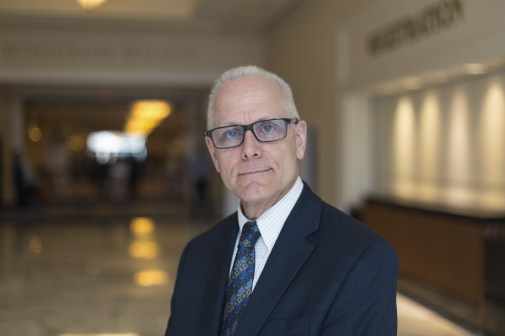Montana considering new phase of IT consolidation, CIO says
Through a recent initiative commissioned by Montana Gov. Steve Bullock, Montana has assembled a team of stakeholders from throughout the state government to examine further steps for its IT consolidation effort.
About three years ago, Montana completed a project to consolidate its IT infrastructure, eliminating redundancy and ensuring that executive-branch agencies could easily use common infrastructure. In a recent video interview with StateScoop, Montana Chief Information Officer Tim Bottenfield told StateScoop the project was “very successful” and that the state is now in the early stages of consolidating other elements of government IT, such as personnel and applications.
Stakeholders who are now outlining the project — a group called the Montana Optimization of State Technology, or MOST — include executive-branch agency representatives, human resources representatives, personnel from Bullock’s office and members of Bottenfield’s central services IT group.
“The goal is to take a look at where Montana is in the progression of consolidation,” Bottenfield said. “The group is starting to take a look at should we delve into the world of consolidating people? And should we take a look at maybe tools that should be consolidated across the enterprise?”
This next phase of consolidation is still in the earliest stages, what Bottenfield called “a fact-finding situation,” but one that he said he expects will ultimately lead to a decision on the future of consolidation in Montana.
Consolidating IT services has been a consistent trend for at least the past decade in state government as state technology offices have strived to provide services on par with those in the private sector while operating with limited funding and staff. According to the National Association of State Chief Information Officers’ most recent survey results, there is a continued shift toward a “broker model” under the state CIO’s office, in which services are increasingly centralized and issues of cost efficiency and vendor management are given greater priority than in years past.
Bottenfield on digital transformation and modernization:
“Within the enterprise content management in the State of Montana, about three years ago we basically rolled out an enterprise solution for the state. And what we’ve realized over those past three years is that at least in the ECM environment, a one-size-fits-all approach didn’t work.”
Bottenfield on digital services and mobility:
“The State of Montana is almost coming to the end of a two-decade relationship with the first vendor that came into the state and it’s been a good relationship but the second 10-year contract is coming to an end and will expire at the end of 2020. So we will have a new generation of e-government services, or at least a new environment in the State of Montana come 2021.”
Bottenfield on how he sees his role changing in the future:
“Gov. Bullock is termed out next year, so we’ll have an election and we know for a fact there will be a new administration. … So we know, for one, it provides a level of uncertainty and it’s difficult to plan for that. But I am taking a proactive approach to that.”
These videos were produced by StateScoop at the National Association of State Chief Information Officers’ annual conference in Nashville, Tennessee, in October 2019.
